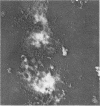Abstract
Inactivation of aggregated poliovirus by bromine is characterized by a continuously decreasing reaction rate. Poliovirus released from infected cells in these experiments by alternate freezing and thawing in water without electrolytes has always been aggregated. The aggregates persist even on 7,000-fold dilution in ion-free water. Virus similarly released into phosphate-buffered saline solution may be well dispersed, but it aggregates when sedimented into a salt-free sucrose gradient or when it is diluted as little as 10-fold in water. Large one-step dilutions of dispersed virus in water remain dispersed. Aggregated virus was not dispersed by one-step dilution (7,000-fold) in distilled or untreated lake water but was dispersed if phosphate-buffered saline or clarified secondary sewage plant effluent was used as diluent. Dispersed virus aggregates at all dilutions in alum-treated, finished water from the city filter plant. This may be the result of complex formation with insoluble material rather than virion-virion aggregation. A simple procedure is described for rendering a very dilute suspension of mixed virion aggregates into a three-part spectrum of sizes.
Full text
PDF

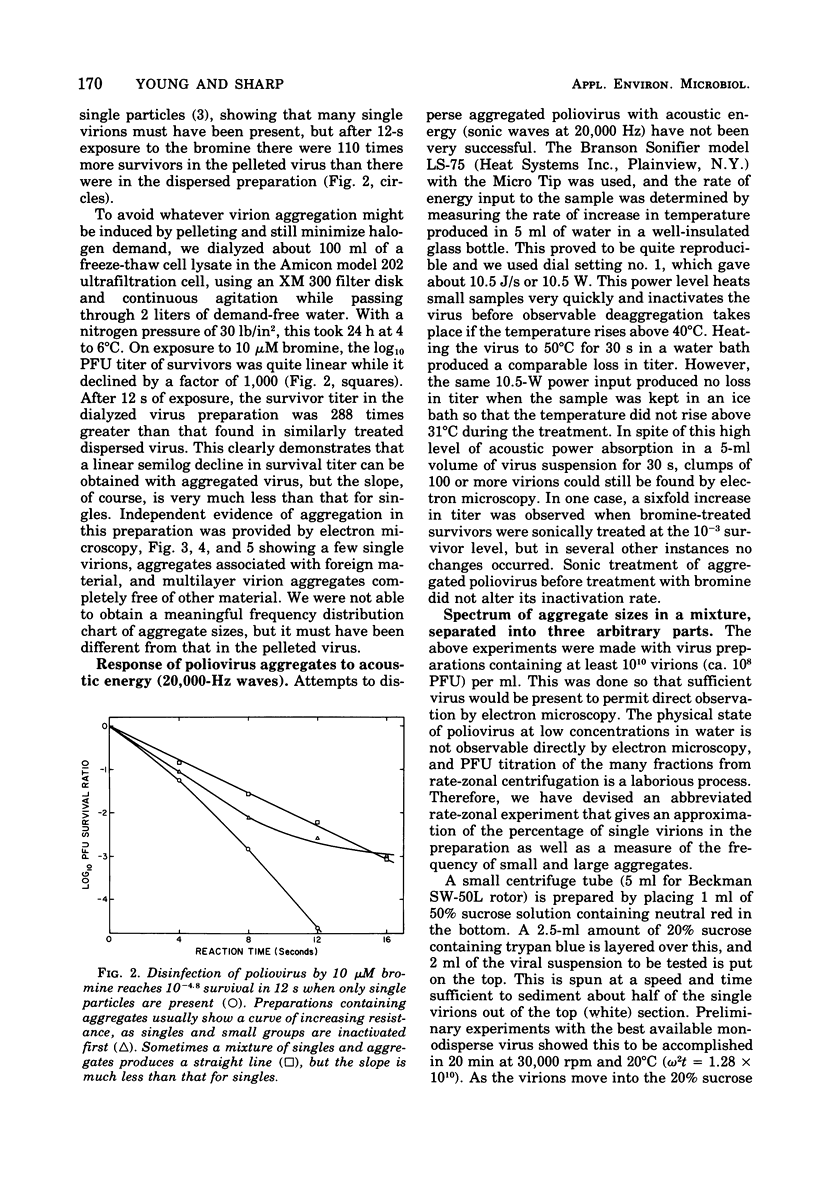

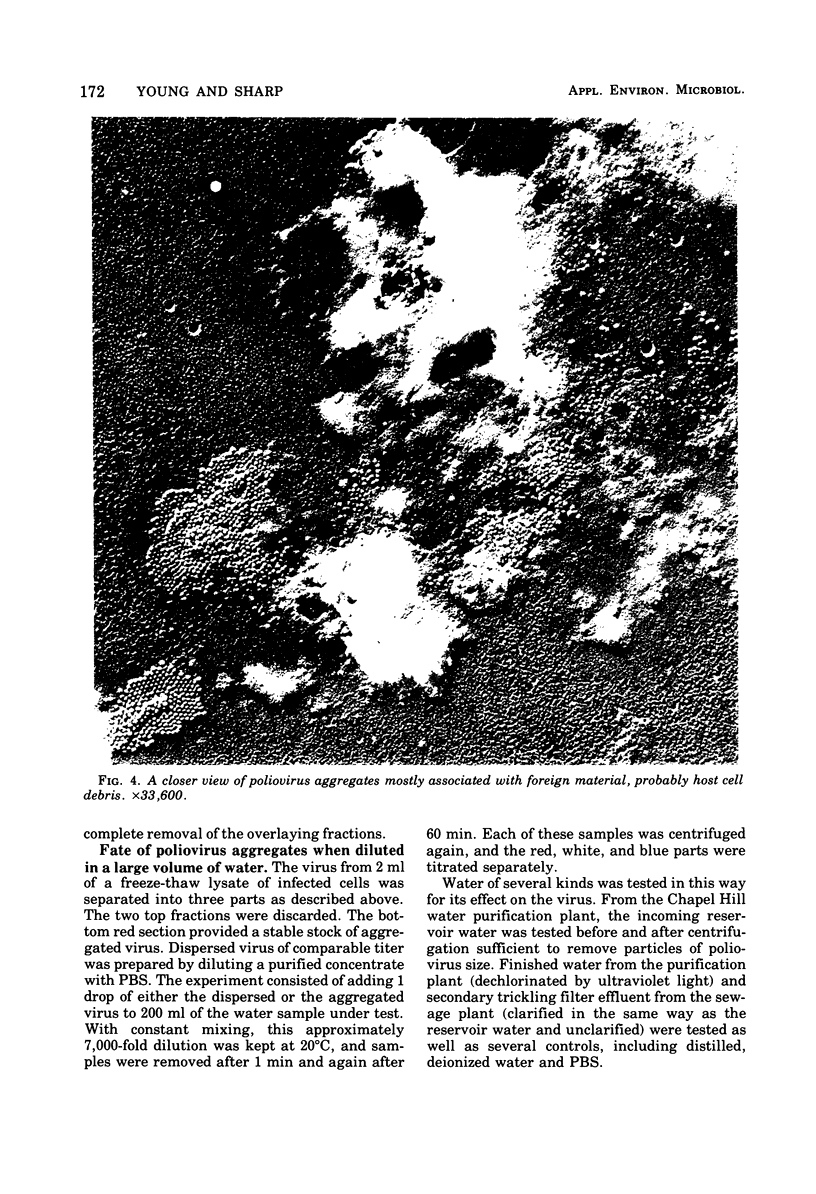
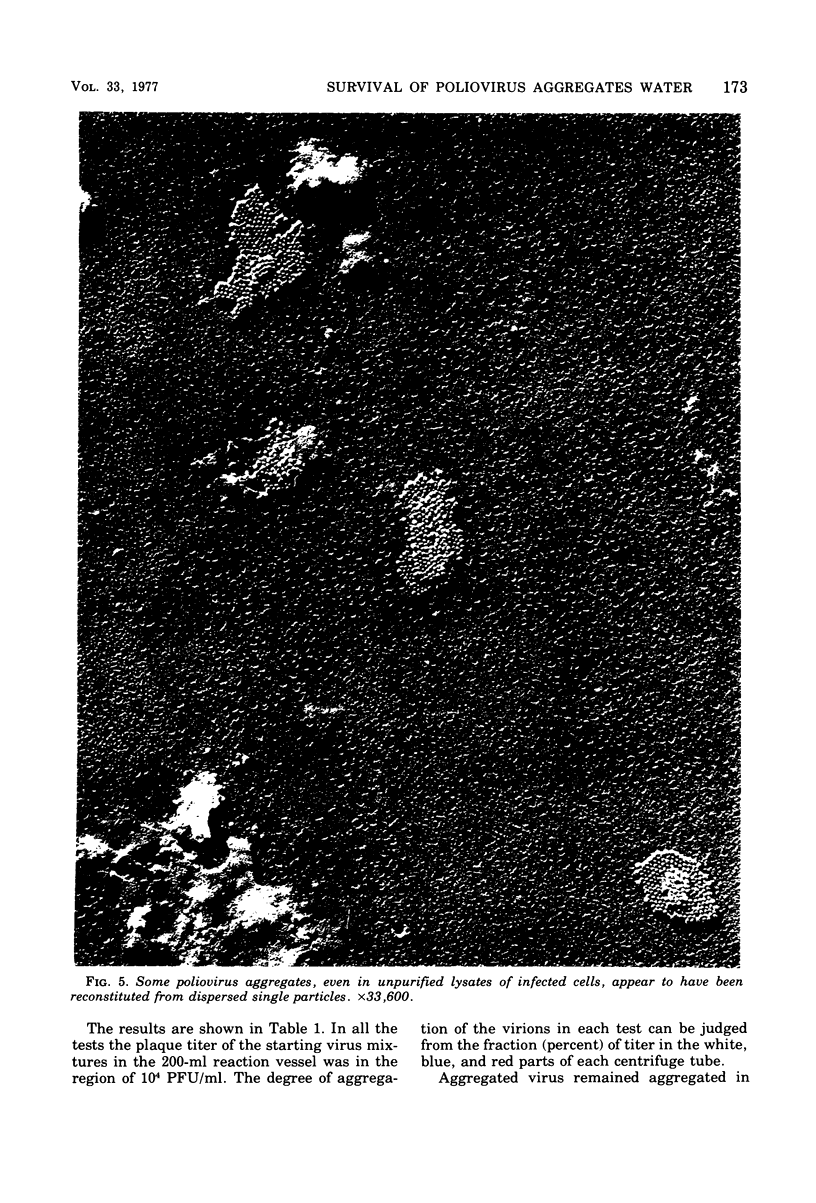


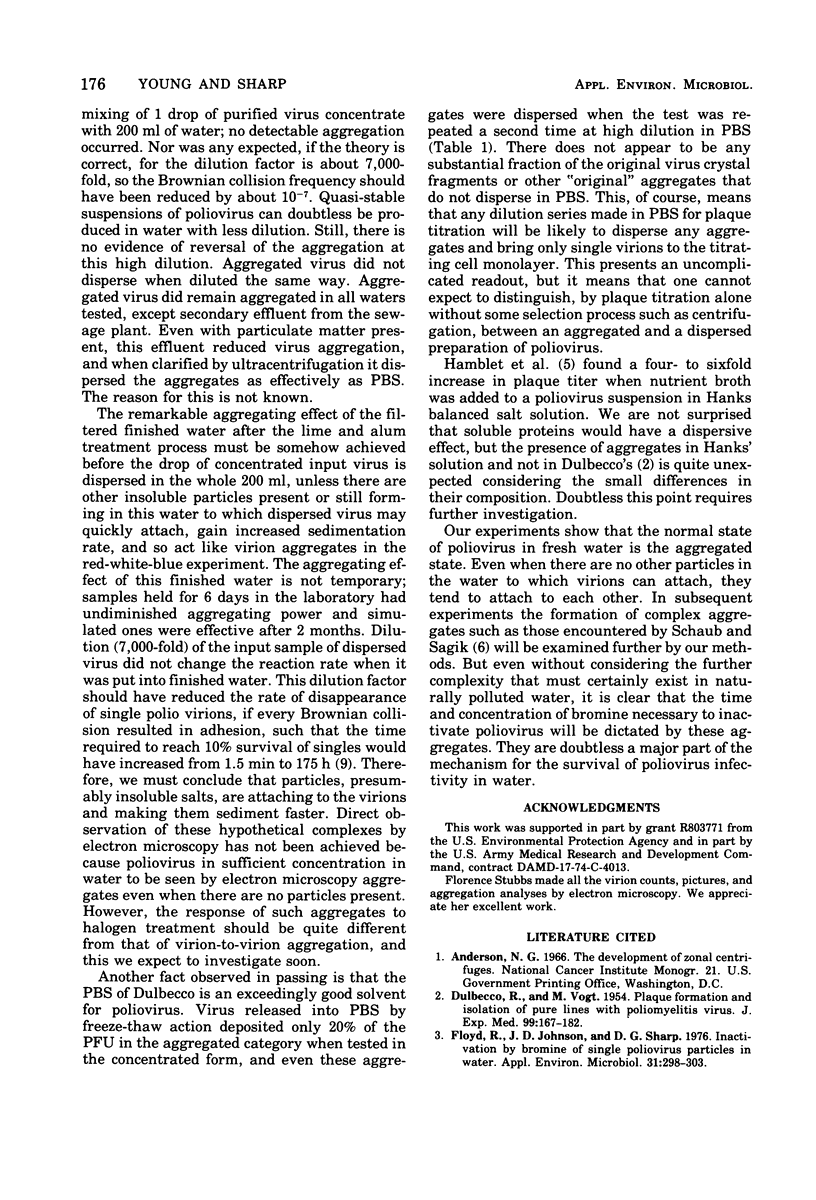

Images in this article
Selected References
These references are in PubMed. This may not be the complete list of references from this article.
- DULBECCO R., VOGT M. Plaque formation and isolation of pure lines with poliomyelitis viruses. J Exp Med. 1954 Feb;99(2):167–182. doi: 10.1084/jem.99.2.167. [DOI] [PMC free article] [PubMed] [Google Scholar]
- Floyd R., Johnson J. D., Sharp D. G. Inactivation by bromine of single poliovirus particles in water. Appl Environ Microbiol. 1976 Feb;31(2):298–303. doi: 10.1128/aem.31.2.298-303.1976. [DOI] [PMC free article] [PubMed] [Google Scholar]
- Floyd R., Sharp D. G. Aggregation of poliovirus and reovirus by dilution in water. Appl Environ Microbiol. 1977 Jan;33(1):159–167. doi: 10.1128/aem.33.1.159-167.1977. [DOI] [PMC free article] [PubMed] [Google Scholar]
- Hamblet F. E., Hill W. F., Akin E. W. Effect of plaque assay diluent upon enumeration of poliovirus type 1. Appl Microbiol. 1967 Jan;15(1):208–208. doi: 10.1128/am.15.1.208-.1967. [DOI] [PMC free article] [PubMed] [Google Scholar]
- Schaub S. A., Sagik B. P. Association of enteroviruses with natural and artificially introduced colloidal solids in water and infectivity of solids-associated virions. Appl Microbiol. 1975 Aug;30(2):212–222. doi: 10.1128/am.30.2.212-222.1975. [DOI] [PMC free article] [PubMed] [Google Scholar]
- Sharp D. G., Floyd R., Johnson J. D. Initial fast reaction of bromine on reovirus in turbulent flowing water. Appl Environ Microbiol. 1976 Feb;31(2):173–181. doi: 10.1128/aem.31.2.173-181.1976. [DOI] [PMC free article] [PubMed] [Google Scholar]



